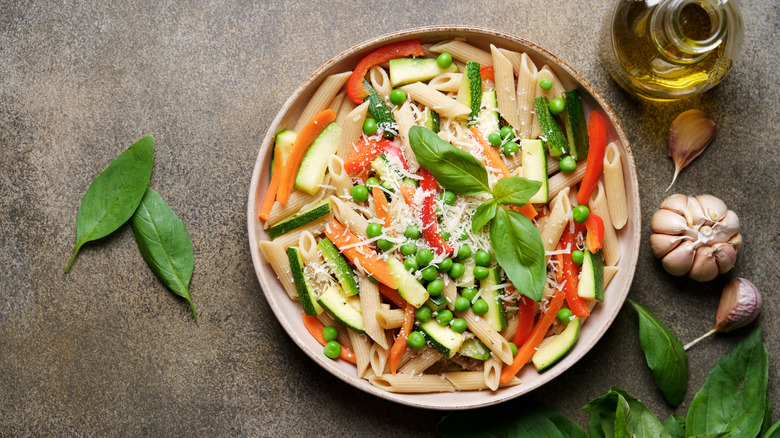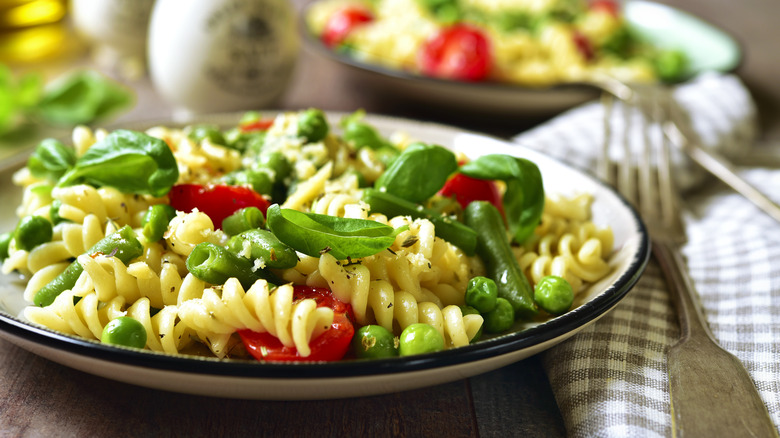Pasta Primavera Is The Best Way To Welcome Spring In Your Kitchen
As the snow starts melting and the sun starts shining again, the turn from winter to spring is marked by a welcome change in seasonal produce. In March, veggies like asparagus, spinach, broccoli, and onions start popping up at farmers' markets — and what better way to celebrate than to turn them into a light, fresh pasta dish? If you're wondering which dish to try, pasta primavera is the perfect meal that's dedicated solely to spring flavors.
In fact, the word "primavera" means "spring" in Italian, although the dish was actually first created in America in the 1970s. The pasta's invention was originally born out of necessity, as Italian restaurant owner Sirio Maccioni combined whatever vegetables he could find with pasta and a cream sauce. It wasn't an instant hit, as the chef at Maccioni's restaurant, Jean Vergnes, allegedly forced cooks to make it in the hallway due to his disdain for pairing vegetables, cream, and pasta. But the dish has lived on into the present day, and now pasta primavera is known as a meal that showcases spring flavors and celebrates the emergence of warmer months.
Spring vegetables are the star of the show in this recipe
We know pasta primavera puts spring veggies at the front and center, but what exactly goes into this dish? Most recipes use longer noodles like bucatini, spaghetti, pappardelle, or tagliatelle. Then a medley of spring vegetables is added, which can be pretty much anything you can get your hands on. Veggies like peas, asparagus, spinach, zucchini, and green beans make for a pretty green dish reminiscent of spring, but you can also use carrots, squash, red pepper, mushrooms, or beans — there's really no wrong answer here. You could sauté them, but try roasting the vegetables for added depth of flavor, as we did in our roasted vegetable pasta primavera recipe.
Once your noodles and veggies are cooked, it's time to mix everything together with a light sauce. The traditional recipe used cream, but you could also make a sauce with vegetable broth, milk, Parmesan cheese, lemon zest, and lemon juice. The key here is to keep everything fresh — you don't want cups of cheese weighing down your veggies and overpowering their flavor. Finish your pasta off with some red pepper flakes and a little herb garnish, and dig into all the spring flavors — you'll practically be able to hear birds chirping in the background.

